Impatiens capensis
A plant of moist woods with orange spotted jewel-like flowers
Impatiens capensis spotted jewelweed
This native annual wildflower is found in moist soils, ditches, along creeks, and on the edges of woods. When the sunlight slips into the shady areas of the forest margins and illuminates this little orange flower, it does look like a glistening jewel. Spotted jewelweed often grows near the related yellow pale touch-me-not. They are clearly different species since there is no evidence of natural hybrids. It has many of the same features as the pale touch-me-not, except that the flowers are a bit smaller (1 inch long) and colored golden orange. It is likely that the two species attract different pollinators since there is a biological principle that two species cannot occupy the same ecological niche or one will go extinct.
This species is one example of how the traditional petals and sepals can be modified into a complex form. Three petals and three sepals of the flower combine to make the various parts of the flower. One large sepal forms the conical sac and a hooked nectar spur. The flowers are held horizontally on drooping pedicels. Like the pale touch-me-not, the petals form the front of the flower and one sepal forms the conical rear part of the flower and the nectar spur. The nectar spur in this species is hooked and bends parallel to the flower sac. The flower also often has reddish-brown speckles or spots. Hummingbirds and long-tongued bees are the major pollinators. The blooming period is from June to October.
The thin, alternate leaves may wilt during dry spells. The plant grows 2-5 feet tall, often in moist shady places along the edges of woods and thickets. The mature seedpods will also expel their seeds for some distance if touched or squeezed. This species also has been used traditionally as a treatment for skin rashes. Though many hikers swear these plants are an effective treatment for mosquito bites and poison ivy rash, only a fungicide effect has been shown scientifically. This may be related to its traditional use to treat athlete’s foot, a fungus infection of the skin. Scientific studies have shown that the juices from the plant are less effective than ordinary soap in treating poison ivy.
This species is often called the orange jewelweed, common jewelweed, snapweed, and orange balsam. It grows throughout North America except for the arid Southwest. It is found throughout Pennsylvania.
Habitat & Range
Moist woods, edges of wetland, shores of streams/rivers, moist roadsides.
Present throughout the state.
Range: Found throughout North America except for the arid Southwest.
| EMP: | FACW |
|---|---|
| NCNE: | FACW |
Phenology
Flowers July through September.
Plant Codes
S-rank: No rank
G-rank: G5 (Secure)
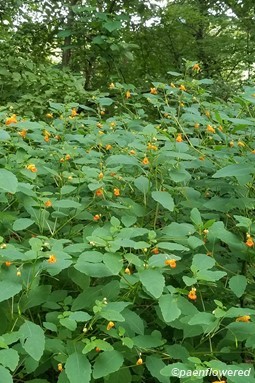
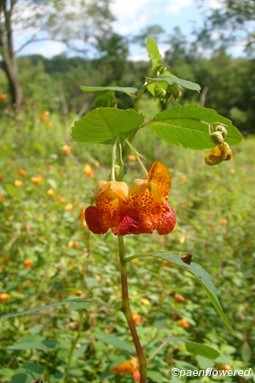
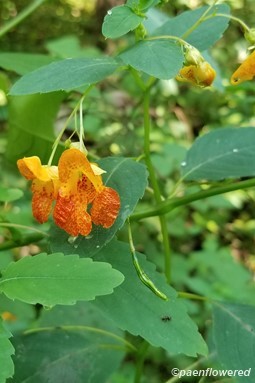
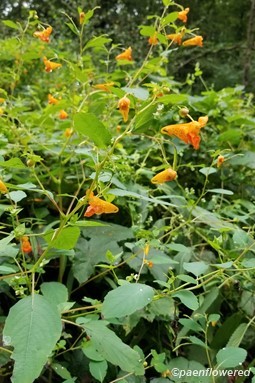
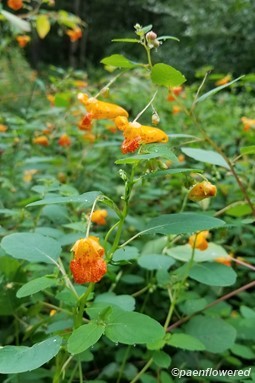
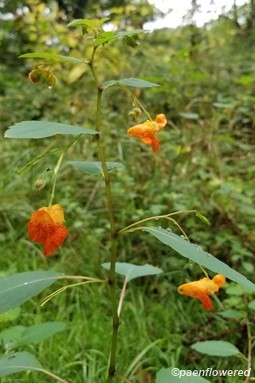


Comments
Have you spotted this plant in your area? We'd love to hear about your experience! Share your comments or questions about the plant below. Comments are moderated before posting.